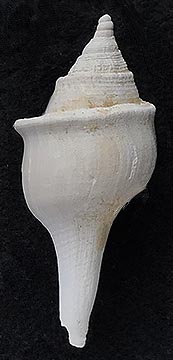Six genera are known: two are Early Jurassic age and four are Late Cretaceous age (Campanian Stage/Maastrichtian Stage). These genera are unique to Antarctica, but they are generally closely related to either South American dinosaurs.
When dinosaurs lived in Antarctica, the continent was ice free. During warm Early Jurassic time, all the continents on Earth were part of the single large continent called Pangea, which existed from the Late Paleozoic to the Triassic/early Jurassic time. Then the northern part of Pangea (Laurasia) separated and the central Atlantic Ocean simultaneously began to open up. The southern part of Pangea (Gondwana), which included South America, Africa, Arabia, Madagascar, India, New Zealand, Antarctica, and Australia, eventually underwent its own breakup, which occurred in stages. It started with Africa and South America separating from India, Antarctica, and Australia. During Cenozoic Paleogene time (66 to 23 mya), Antarctica became a separate continent. Its climate was mild until 34 mya (= end of the Eocene and beginning of the Oligocene), when continental glaciers began to accumulate in Antarctica.
Figure 1. PangeaBy Middle Cretaceous times, dinosaurs in Antarctica were geographically somewhat isolated, but close connection between Antarctica and Australia still existed.
EARLY JURASSIC DINOSAURS
The two middle Early Jurassic (Pliensbachian Stage) [199–183 million years ago] dinosaurs found in Antarctica are the theropod Cryolophosaurus and the sauropod Glacialisaurus.
Their remains are both found at the same site in the Hanson Formation in the central part of the Transantartica Mountains that “divide” western from eastern Antarctica. This mountain chain was an active volcanic rift-system area.
Google-Earth image showing the location of the Hanson Formation in the Transantarctica Mountains.
Cryolophosaurus elliotti is based on a single specimen. It is the only theropod found so far in Antarctica. This dinosaur, which was an “apex predator” was 8 feet in height at the hips, 21 to 26 feet long, and it is estimated to have weighed 1000 pounds. It has an unusual-looking pompadour spanning its head from side to side. This dinosaur had primitive needle-like feathers.
Glacialisaurus hammeri is based on two specimens. This early sauropodomorph dinosaur was 20-25 feet long, and is estimated to have weighed approximately 5 tons. It had leaf-shaped teeth.
LATE CRETACEOUS DINOSAURS
Two of the four Late Cretaceous dinosaurs found in Antarctica are of Late Cretaceous age and have been reported as of Campanian Stage-age (79-77 mya). The other two dinosaurs have been reported as of Maastrichtian Stage-age (68 mya) age. All of their remains, however, are found at the same site in the Snow Hill Formation on Seymour Island, which is located just south of South America. These Snow Hill Formation dinosaurs are closely related to South American dinosaurs.
Google-Earth image of the Late Cretaceous Snow Hill Formation dinosaur locale on Seymour Island.
Antarctopelta oliveroi is based on a single specimen of reportedly upper Campanian age. This ankylosaur was a herbivore with armor plates. This dinosaur is estimated as having been 13 feet (4 m) long.
Trinisaura is based on a single specimen of upper Campanian age. This ornithopod was 2.5 feet tall and 5 feet in length.
Morrosaurus is based on a single specimen. This ornithopod was a herbivore elasmarian genus. Its geologic age has been reported as of Maastrichtian Stage (approximately 68 mya) of the Late Cretaceous Period (approximately 68 mya).
Imperobator is a paravian theropod (“an early bird”) that has been reportedly as of Maastrictian age. This dinosaur lacked an enlarged sickle claw.
The biodiversity of Antarctican dinosaurs is very low, but this is to be expected because the continent is currently covered in glacial ice and the climate is not conducive to prospecting for fossils.
References Consulted:





































